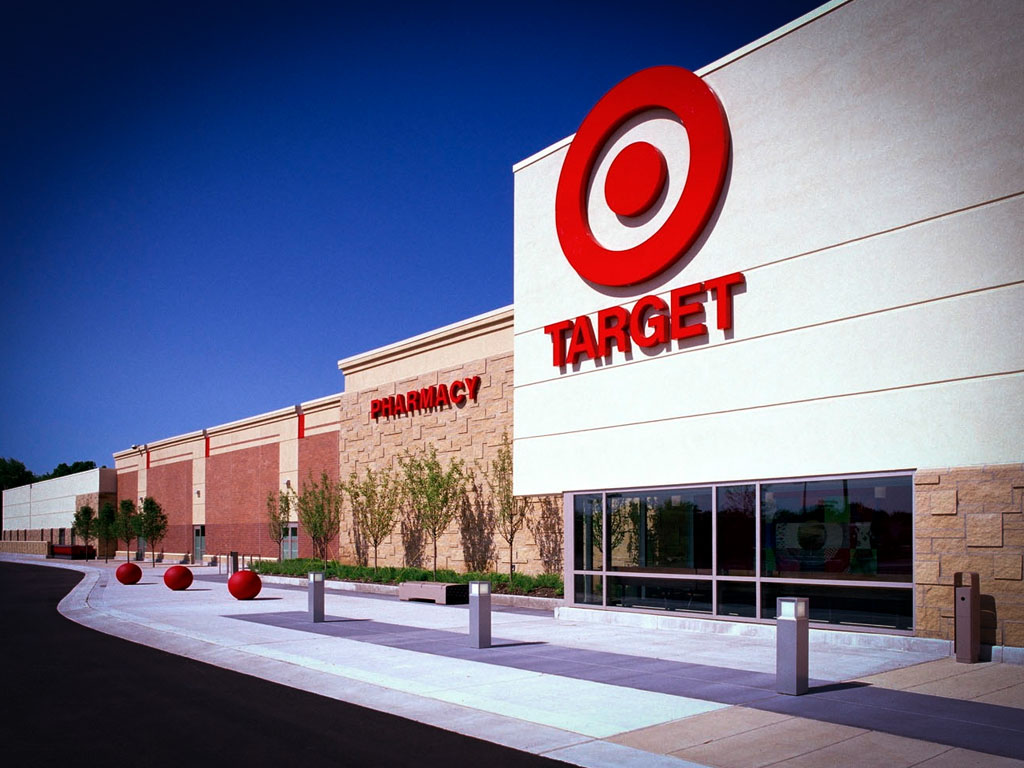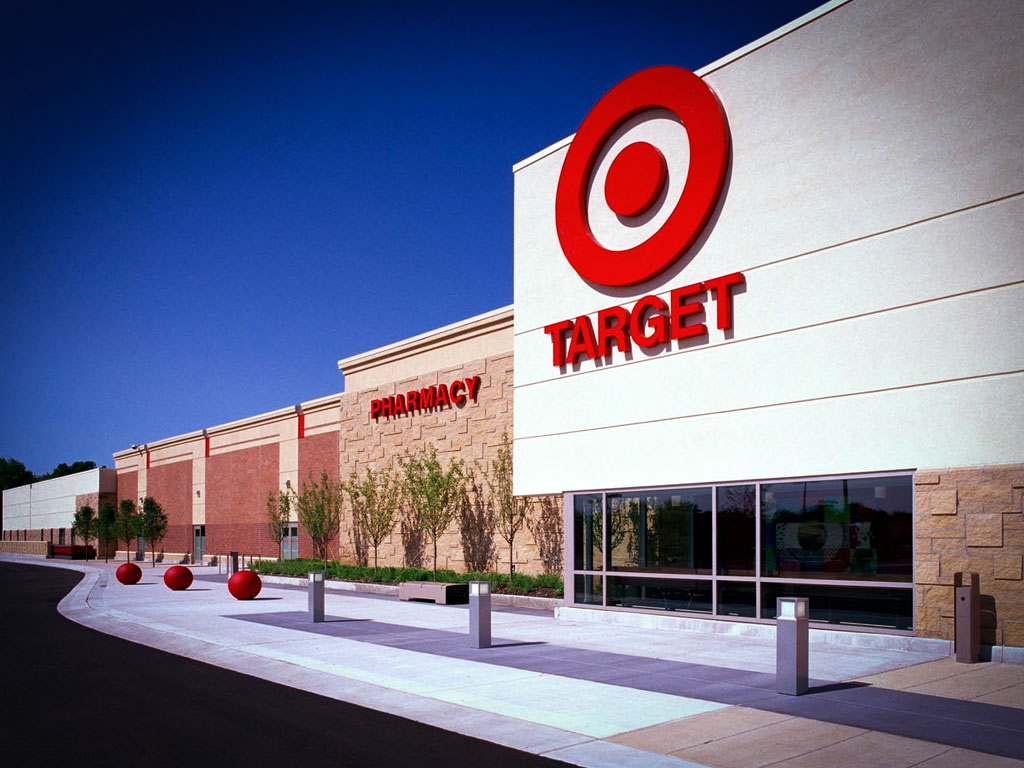Earlier this month, Target released its Q4 2017 results alongside 2018 guidance. The release brought with it selling pressure on the stock, which has yet to recover and as the broader market experiences steep declines. Much of the reaction to the Q4 2017 results was a result of a stock price that had stormed higher since November of 2017 and on the heels of an overall surge in the retail sector as a whole. So let’s briefly take a look back at Target’s Q3 2017 performance and guidance for the Q4 2017 period before discussing Q4 2017 more broadly. The Q3 2017 results are bulleted below and were above analysts’ expectations for said quarter.
- Third-quarter comparable sales increased 0.9%.
- Traffic increased 1.4%, which was a deceleration from the previous quarter and largely due to a tough comparison in the same period a year ago.
- Third quarter adjusted EPS of $0.91 was near the upper end of the guidance range of $0.75 to $0.95. GAAP EPS from continuing operations was $0.87, $0.04 lower than adjusted EPS
- Third quarter gross margin rate of 29.7% was down about 10 basis points from last year.
- The count of ship-from-store locations has grown more than tenfold and it’s now in more than 1,400 locations across the country.
- Launched 8 new brands in 2017.
On January 9, 2018, Target raised its Q4 2017 guidance to include the following:
“Company now expects fourth quarter comparable sales growth in a range around 3.4 percent and full-year 2017 comparable sales growth of more than 1 percent.
The Company is currently planning for a low single-digit increase in its 2018 comparable sales and year-over-year stability in EPS generated by its core business, excluding the benefit from recently enacted federal tax reform. For fourth quarter 2017, the Company expects Adjusted EPS1 of $1.30 to $1.40, compared to the prior range of $1.05 to $1.25. For full-year 2017, the Company now expects Adjusted EPS of $4.64 to $4.74, compared with prior guidance of $4.40 to $4.60.”
So when Target did finally report its Q4 2017 results on March 6, 2018, the company met its raised guidance of $1.30-$1.40 per share by delivering EPS of $1.37 a share. But analysts were expecting $1.38 a share based on the strength of the holiday sales update. Target delivered revenues of $22.77bn (+10.1% Y/Y), which beat analysts’ expectations by $240mm in the Q4 2017 period. Target also reported comparable sales increased 3.6% in Q4 off some late-quarter momentum vs. +3.4% consensus, which was the previously increased guidance. Traffic was up 3.2%, with both store and digital sales higher. Digital sales rose 29% during the quarter to contribute to half of the comparable sales gain. Gross margin fell 40 bps to 26.2% of sales as higher digital fulfillments costs factored in. The company’s EBIT margin was 5.1% vs. 6.5% a year ago. SG&A expenses rose 100 bps to 18.5% of sales.
Target had a difficult year as the company had to dedicate itself to many changing trends in the retail industry. The company dedicated itself to winning market share by ensuring its pricing structure was competitive and delivered value to the consumer. Target spent roughly $1bn in gross profits aimed at this objective and it definitively impacted gross margins, but also found the retailer gaining market share in most every major sales category it offers.
Target has won the swimwear category as it proclaimed in the summer of last year. It would be hard to argue against the retailer’s claim with Macy’s completely eliminating the category from its assortment last year. In 2018, Target doesn’t plan to rest on its laurels. Only a few short days ago, the company launched it’s latest collection of swimwear. The new collection has the right fit for every body type and style and was recently highlighted in People Style online magazine.
“With over 1,700 new swim styles the options are pretty much endless — not to mention size-inclusive and affordable. The entire collection ranges in price between $14.99 and $49.99, with most styles coming in around $24.99! And with Target being a leader for body positivity, they’ve even expanded the assortment of styles to fit all shapes, sizes and body types.”
Toys have been another growing category for Target over the last decade and it has come at the expense of its competitors. Toys R Us has felt the growing presence of Target and Wal-Mart in the category for the last decade and recently was forced to liquidate the totality of its retail operations in North America. Target aims to be a big beneficiary of the market share lost by and through the Toys R Us store closings taking place presently.
Seth Sigman, an analyst with Credit Suisse, wrote in his most recent report that Target could gain some $600mm in market share sales vacated by Toys R Us this year.
After analyzing both chains’ physical locations, Sigman concluded that 90 percent of Toys ‘R’ Us stores and 96 percent of Babies ‘R’ Us stores are within 5 miles of a Target.
Because of proximity and other calculations, he said Target is poised to capture about 15 percent of sales from those nearby Toys ‘R’ Us locations, 5 percent of sales from the Babies ‘R’ Us stores and 5 percent of the chain’s online sales.
While the aforementioned product categories are likely to remain strong wins for the company going forward, the company continues to manage through the seismic changes in retail. While Target has spared no expense at winning on price and value, the company continues to focus on its stores, in-store teams, processes and online initiatives. Target remodeled over 100 stores in 2017 and plans to triple that number in 2018. The company now has plans to remodel over 1,000 stores by 2020. After stores remodel, traffic grows and these remodeled stores have expressed a 2% to 4% sales lift on average.
In addition to the remodeling efforts, Target is also dedicated to small store format build out for years to come. Last year, Target opened nearly 30 small format stores, doubling the number opened up to that point. In 2018, Target will add another 30 small format stores in strategic locations. By the end of 2019, the retailer aims to have130 small format stores in operation.
As stores are remodeled and grown, Target is also investing in its teams. It was announced recently that Target would raise its starting wage again to $12, starting with current team members this spring. Long-term, Target’s goal is to have a starting wage of $15 by 2020. In 2017, Target invested directly in team members by developing tools to assist them in delivering on all aspects of customer service. Last year Target launched an application on the team member device that allows them to order something for a guest if the item they want wasn’t in their store. This holiday season it saved the sale and extended the aisle for thousands of guests. Other retailers have used this technology for years, but void of use at the likes of Target and Wal-Mart. Possibly of even greater importance is that soon Target store teams will use the same technology to save guests from standing in line.

The Target PDF or PDT looks much like as shown in the photograph above. It has a host of different applications, most of them designed for the purpose of inventory management and in-stock operations. But extending the device to more capably assist the guest as an extended point-of-sale device has great potential to differentiate Target from its peers. J.C. Penney has also dedicated itself to such applications to better service shoppers.
Rewarding team members has served Target well in 2017. Last year, management informed store teams, if you post positive comps in 2017, they could wear jeans every weekend in 2018. Sure enough, if you are in the Target store on Sunday, you saw a lot of denim.
In 2017, Target grew online/digital sales by over 25 percent. This result marked the 4th consecutive year the company grew online sales by more than 25 percent. Target maintains dominance in digit retail sales, but must continue to drive this business segment as physical store sales have come under pressure in past years due to changing consumer demographics and habits. With online sales comes the juggling of costs for a retailer and in 2017 Target managed these costly investments in digital fulfillment. Acquisitions were key to the scaled digital initiatives in 2017 and Target now aims to scale these initiatives.
Target offers next day, same day pick up, Drive Up, and of course, tens of thousands of new personal shoppers delivering Target products from ShipT, an acquisition recently announced. Of course these varied pick up services come with the traditional ship direct options to customers. With Drive Up, Target is taking last year’s 50-store test nationwide to nearly 1,000 locations coast-to-coast. Announced recently, Target is also going to offer free two-day delivery on hundreds of thousands of items on target.com. No membership, no extra fees.
While digital sales grow at a rapid pace, the physical store remains at the forefront of fulfilling digital sales. In-store processes have evolved to not only cater to guest shopping in store, but to also fulfill online orders from guests. This year, to keep up with digital demand that continues to far outpace the industry, Target is introducing a pilot program for backroom design to more than 150 stores and reengineering fulfillment in more than 1,000 other locations. With this additional capacity Target expects stores to ship nearly double the number of packages for Cyber Monday 2018 compared to last year. The goal for these digital and fulfillment objectives is to be able to offer same-day delivery in nearly every major market by the holidays and to be the first retailer to do so.
Target is doing all the right things for what it sees before them and behind them. It has suffered through great changes in consumption habits that have found some of its peers in bankruptcy or curtailing their store footprints. Targets assortment and store operations are stronger and expressing greater profits than in recent years, but the road ahead does not get any easier for the retailer. With that being said, let’s now take a look at the company’s guidance and expectations for 2018.
- Target expects a low-single digit increase in comparable sales for the full year. EPS of $5.15 to $5.45 is expected vs. $5.26 consensus.
- CapEx guidance to arrange around $3.5 billion dollars in 2018, reflecting the incremental investments in both stores and supply chain.
- Operating margin rate will be down about 20 basis points this year. This year’s expected decline in operating margin rate will be driven entirely by $175 million increase in depreciation and amortization.
- Consolidated tax rate to be in the low to mid-20% range, lower than in recent history in light of Tax Reform.
- Gross margins to be flat to slightly down.
- On the topline, Target is planning for a low single-digit increase in first quarter comparable sales with a moderate increase in the first quarter gross margin rate. First quarter adjusted EPS to be $1.25 to $1.45 per share.
One of the broad takeaways from Target’s Q4 2017 results was the declining operating margins and the guidance that shows a trend in declining operating margins. This can prove concerning for investors and may have resulted in some of the selling pressure on the stock. But it’s important to look at the metric under the microscope to better understand its relevance and answer the question as to “why” the metric is anticipated to continue showing contraction. If we look at 2017, even with an operating margin decline driven by investments, Target generated almost $7 billion of cash from operations. That is $1.5 billion more than 2016, nearly a 30% increase, despite the headwinds facing the brick and mortar retail industry.
Department store sales have remained strong since the December 2017 period and apparel sales have had broader strength. The consumer should get a boost in 2018 from tax reform legislature that is accompanied by somewhat higher wage growth on a YOY basis.

All of this should come together more favorably for Target shareholders in 2018. In conclusion, a note from Brian Cornell, Target’s CEO on the most recent quarterly conference call:
“I’ll be the first to say, we still have a lot of work to do. The competition is fierce. The pace of change is unrelenting and our guest deserves the very best. But I couldn’t be more bullish about Targets prospects.”
Tags: JCP TGT WMT XRT










